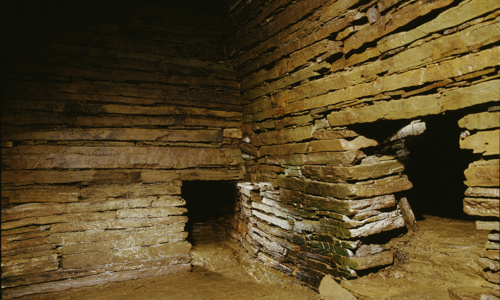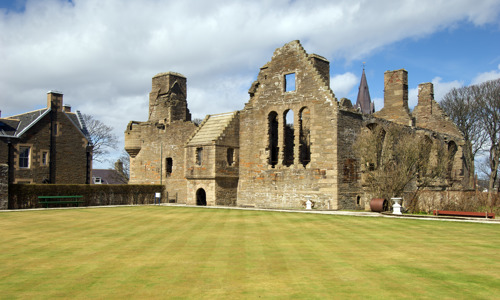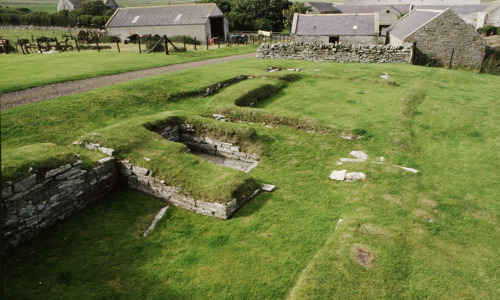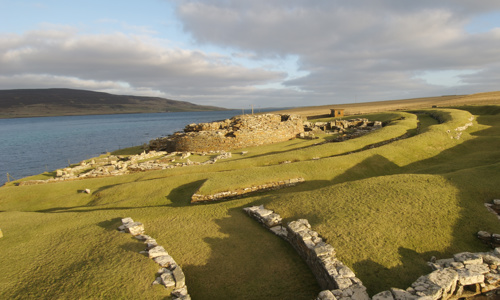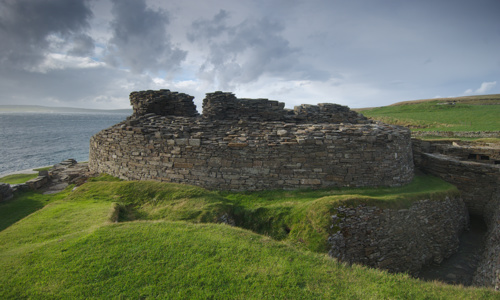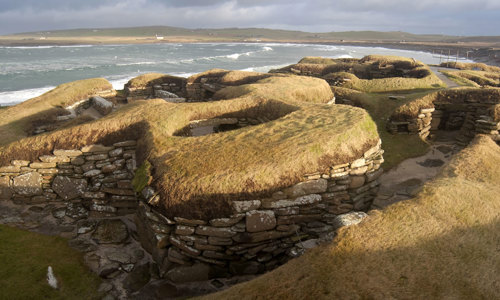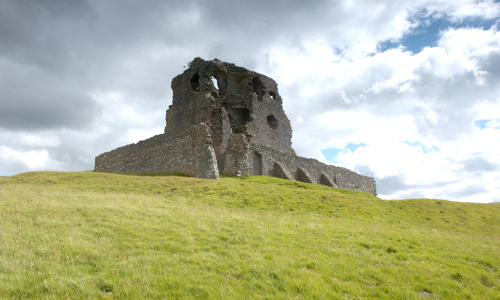History
Rennibister Earth House probably dates to about 400 BC. In most regards it’s a fairly normal Orkney souterrain – an underground passage terminating in a small, stone-lined chamber.
But when Rennibister was discovered in the 1920s, there was an unusual find in the chamber – the disarticulated and arranged bones of about 18 individuals. There were six adults and perhaps 12 children among them, with both sexes represented. We don’t know how or why they came to be buried here.
It seems the remains date to the middle to late Iron Age – several hundred years after the souterrain was first built. It is unlikely it was ever intended as a burial chamber. Evidence of Iron Age burials are rare in Scotland, let alone the sequence of burial rites that seemingly led to this deposition of human remains.
An ancient settlement
Rennibister Earth House is now on the site of a modern farm, near the top of a low mound. It is likely that this mound is the remains of a long-lived settlement, and that the souterrain was part of a larger prehistoric settlement. Excavations elsewhere have revealed timber and stone roundhouses associated with souterrains.
Its passage is about 7m long and terminates in a chamber, the roof of which is supported on free-standing pillars of single upright stones. Besides the bones, the only other recorded find in the chamber was an ox scapula ‘spade’.
Uncertain purpose
Despite their name, earth houses were not dwellings, but stone-lined underground passages. They’re also known as souterrains, and are found in Brittany, Cornwall, Ireland and eastern Scotland.
Within Scotland there are distinct regional types. Angus and Perthshire is home to some massive souterrains, averaging 46m2 in area, while those in the Northern Isles – like Rennibister Earth House – are significantly smaller, providing just 5m2 of space. The smaller ones were built earlier, at the end of the first millennium BC, while the larger ones probably date from the first two centuries AD.



